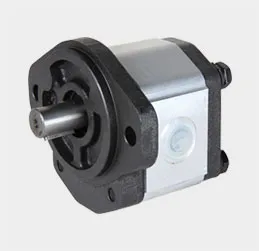High-Quality Steel Precision Casting for Reliable Industrial Applications
Understanding Steel Precision Casting A Comprehensive Overview
Steel precision casting, an essential process in modern manufacturing, allows for the creation of complex shapes and components with high accuracy and excellent surface finish. This technique, often referred to as lost-wax casting or investment casting, has revolutionized various industries, including automotive, aerospace, and machinery, by offering significant benefits over traditional manufacturing methods.
The Casting Process
The steel precision casting process begins with creating a model of the desired object, usually made from wax or another material that can be easily melted away. Once the model is prepared, it is coated with a ceramic shell. This coating is crucial as it forms the mold that will hold the molten steel. The next step involves heating the mold, causing the wax or the other material to melt and drain away, thereby leaving a hollow cavity that reflects the shape of the original model.
After the mold is prepared, molten steel is poured into the cavity. This steel, which can include alloys for enhanced properties, is heated to a temperature that ensures it flows easily into the mold, filling every intricate detail. Once the steel cools and solidifies, the ceramic shell is removed, revealing the precision-cast steel component. This final piece often requires minimal finishing, significantly reducing the time and cost associated with typical machining processes.
Advantages of Steel Precision Casting
Steel precision casting offers numerous advantages, making it a preferred choice for many applications
1. High Dimensional Accuracy The precision casting method allows for the production of components with intricate shapes and tight tolerances. This is particularly crucial in industries where parts must fit perfectly together, such as in engines or structural components.
2. Excellent Surface Finish The process produces parts with a superior surface finish compared to traditional machining. This results in fewer post-casting operations, saving time and improving the overall efficiency of production.
steel precision casting

3. Material Efficiency Steel precision casting minimizes waste since the process utilizes only the materials necessary to create the final product. This is especially important in industries where raw material costs are high.
4. Versatility This casting method can accommodate a wide range of steel alloys, allowing manufacturers to choose materials that best fit the mechanical properties required for each application. From corrosion resistance to strength and hardness, the casting process can be tailored to meet specific needs.
5. Complex Geometries The ability to produce complex geometries that would be difficult or impossible to achieve through machining is one of the standout features of precision casting. This capability opens up design possibilities for engineers and designers, allowing for innovative solutions and improved product performance.
Applications in Various Industries
Steel precision casting is widely used across several industries. In the automotive sector, it is employed in the production of engine components, transmission parts, and structural elements that require high strength and reliability. Aerospace relies on precision castings for critical components that must withstand extreme conditions, such as turbine blades and structural frames. Additionally, the industrial machinery sector benefits from precision castings in the manufacture of pumps, valves, and other equipment vital to operational efficiency.
Challenges and Considerations
Despite its numerous advantages, steel precision casting does come with challenges. One such challenge is the initial investment in tooling and equipment, which can be substantial. Additionally, ensuring consistent quality and managing the casting process requires skilled labor and careful monitoring of conditions.
Conclusion
Steel precision casting is an invaluable technique in modern manufacturing, offering unparalleled precision and versatility. As industries continue to evolve, the demand for high-quality, complex components will only increase, making precision casting an essential process that meets these requirements efficiently. With advancements in materials and technology, the future of steel precision casting looks promising, paving the way for even more innovative applications and solutions across various sectors. As we move forward, embracing this casting method will be crucial for manufacturers aiming to stay competitive in a rapidly changing landscape.
-
crawler mounted drill rig-Baoding Hairun Machinery And Equipment Trading Co., Ltd.|Underground Drilling Solutions, Confined Space EfficiencyNewsAug.16,2025
-
Custom OEM Couplings | Precision Machining & ManufacturingNewsAug.16,2025
-
Advanced Drilling Solutions for Confined Spaces - Baoding Hairun Machinery | Crawler Mounted Drill Rig&Confined Space ApplicationsNewsAug.16,2025
-
Drill For Confined Spaces-Crawler Drill Rig for Mining Applications|Baoding Hairun Machinery And Equipment Trading Co., Ltd.NewsAug.16,2025
-
Crawler Mounted Drill Rig-Baoding Hairun Machinery And Equipment Trading Co., Ltd.|Compressed Air Power&Frame SupportNewsAug.15,2025
-
Crawler Drilling Rig - Baoding Hairun|Confined Space Drilling&Mine SafetyNewsAug.15,2025















